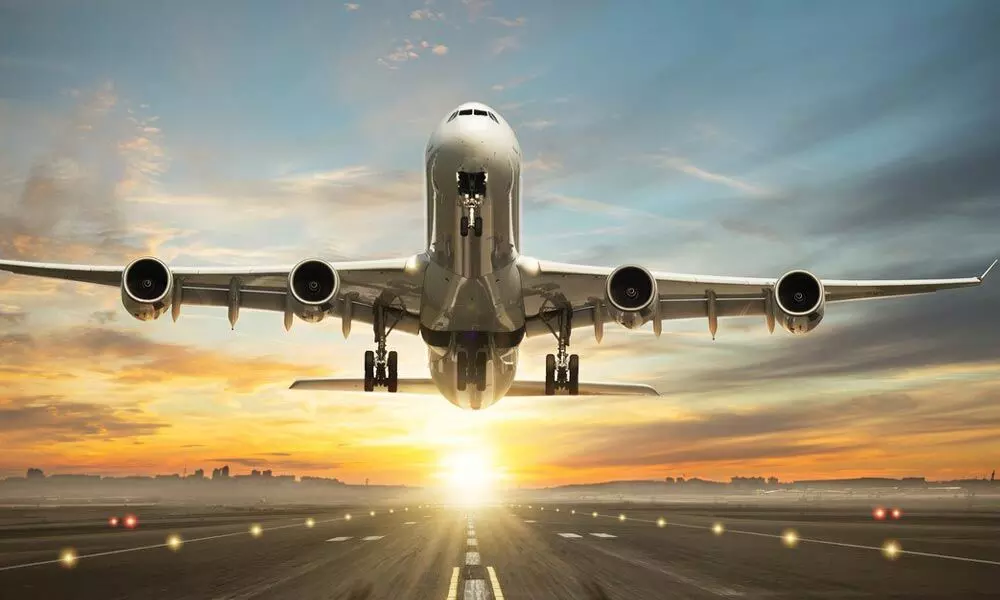Benefits of global airline alliances
Within these collaborations, airlines can share resources, pick up or extend partner routes and even offer the ability to earn and redeem miles through each others’ rewards programs
image for illustrative purpose

Furthermore, alliance activities can help airlines to reduce the cost per passenger, taking advantage of economies of scale, scope and density across geographical boundaries due to increased traffic, joint advertising and equipment sharing, as well as accessing resources that would otherwise not be attainable
Airline alliances are partnerships between or among airlines. Within these collaborations, airlines can share resources, pick up or extend partner routes and even offer the ability to earn and redeem miles through each others' rewards programs.
Partnerships like this could help build miles in one currency instead of stocking up miles in several different currencies. A single miles currency may be ideal if you're working toward a specific redemption. The opportunity to earn and redeem one currency among multiple airlines is incredibly beneficial to a member looking to earn a free flight faster.
Not only is it possible to redeem your miles for flights on partner airlines, but membership status offers benefits across multiple airlines within an alliance too.
Alliances enable airlines to communicate and operate with centralized customer relations such that when things go wrong, one airline's customer relations can adjust, fix, rebook or otherwise repair the itinerary with minimal hassle.
This streamlined approach benefits each airline and customers by reducing the workload all around; it's working smarter, not harder.
Originally conceived as a small-scale agreement to cooperate made between two airlines, airline alliances have grown into huge and ambitious projects, aiming – in the words of the world's biggest alliance – to "take passengers to every city on earth." Three major passenger airline alliances now exist, bringing together between 15 and 27 airlines to reach over a thousand destinations scattered all across the globe.
The advantages of airline alliances are clear. They offer passengers an extended network through code sharing agreements, where two or more airlines share the same flight, listing it in both their reservation systems; this makes booking easier and moving between connections more efficient. Flight times are therefore reduced, and – with operational costs more streamlined – ticket prices lowered (though of course alliances can also lead to a loss of competition on some routes and so occasionally have the opposite effect).
Furthermore, frequent flier rewards can be accumulated across airlines within the same alliance, reducing the time it takes to reach those sky-high mileage rewards. And round-the-world tickets can be bought far more easily, and cost a lot less, as the alliances work together to formulate an overall offer that takes passengers from the palms of the east Pacific to the ice-clad peaks of Patagonia – or wherever else you may wish to go.
While joining an alliance has many benefits for the airlines themselves – increased efficiency, reduced operational costs, and the fact partner airlines can work together to feed each other passengers – it's also pretty expensive. Airlines have to meet very specific standards in order to do so, and this usually requires some tweaking of their current operation. So if an airline has a particular niche, or a pre-existing strong brand, they may choose to continue to go it alone. Hawaiian Airlines is an example of an airline with a strong niche: it is the only US airline to fly between the islands, and so is fed traffic from all the other airlines without having to shoulder the costs of joining an alliance. Budget airlines, also, are chosen not for their ease, efficiency or amiability, but solely on the basis of their price – and so RyanAir and EasyJet, among others, are not part of any alliance. And a few heavy hitters with established brand names have, thus far, chosen to hold themselves apart, including Virgin Atlantic, Emirates and Etihad.
The main objective of airline global alliances is to contribute to long-term airline profitability and development, far beyond what any airline or airlines could achieve individually or bilaterally. As explained by Dresner and Windle, for most airlines, the primary point of forming alliances is to serve on international routes and expand global route coverage, which otherwise would be very difficult due to legal and regulatory limitations.
Furthermore, these kind of alliance activities can help airlines to reduce the cost per passenger, taking advantage of economies of scale, scope and density across geographical boundaries due to increased traffic, joint advertising and equipment sharing, as well as accessing resources that would otherwise not be attainable.

